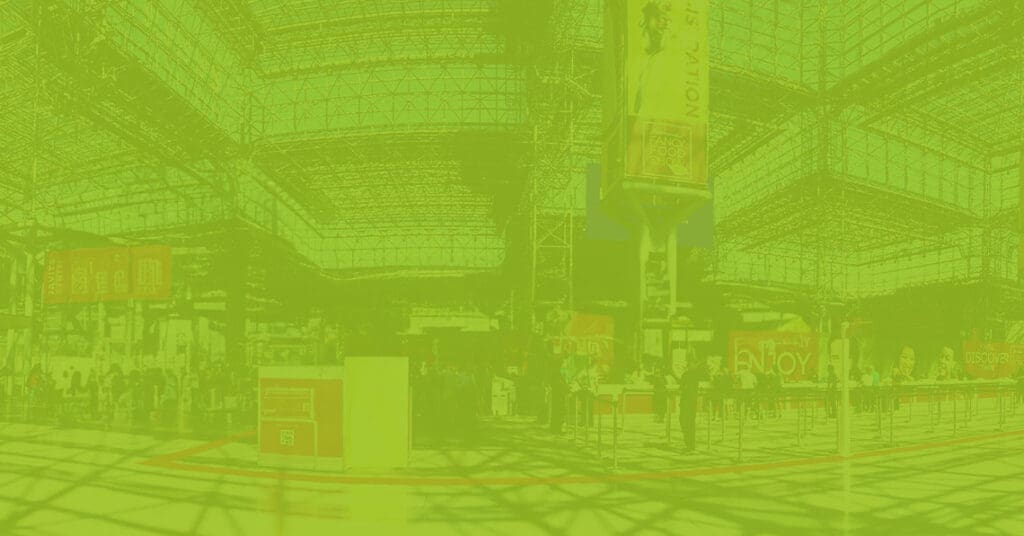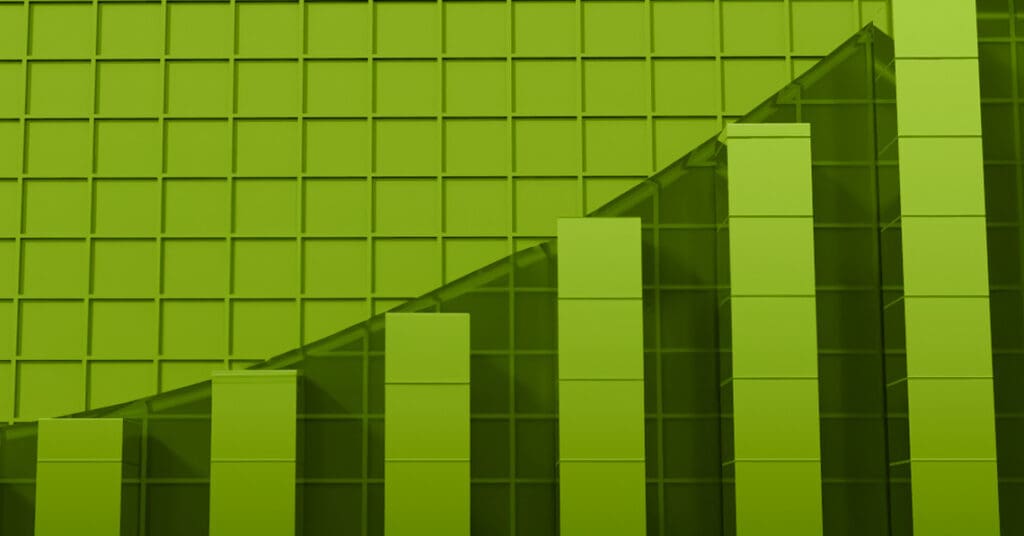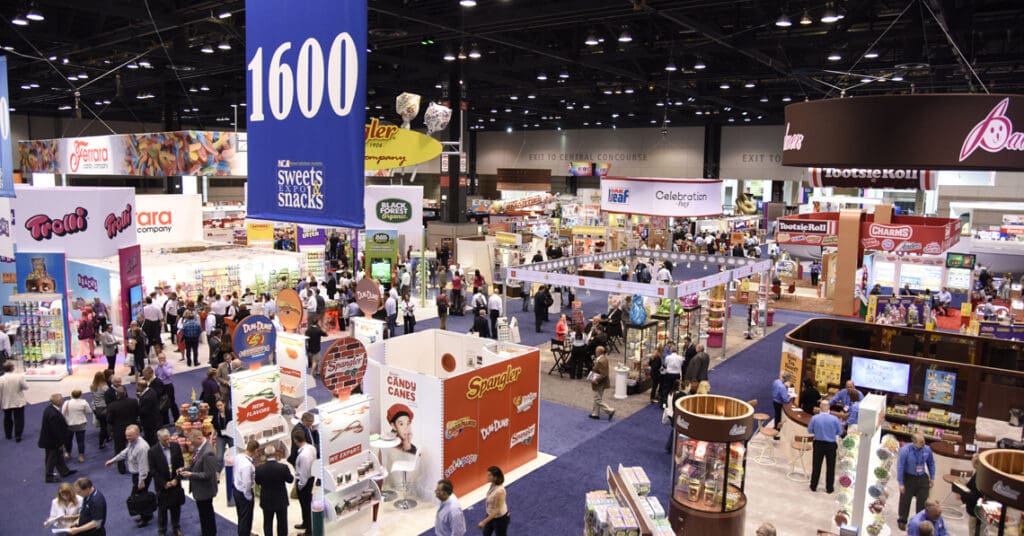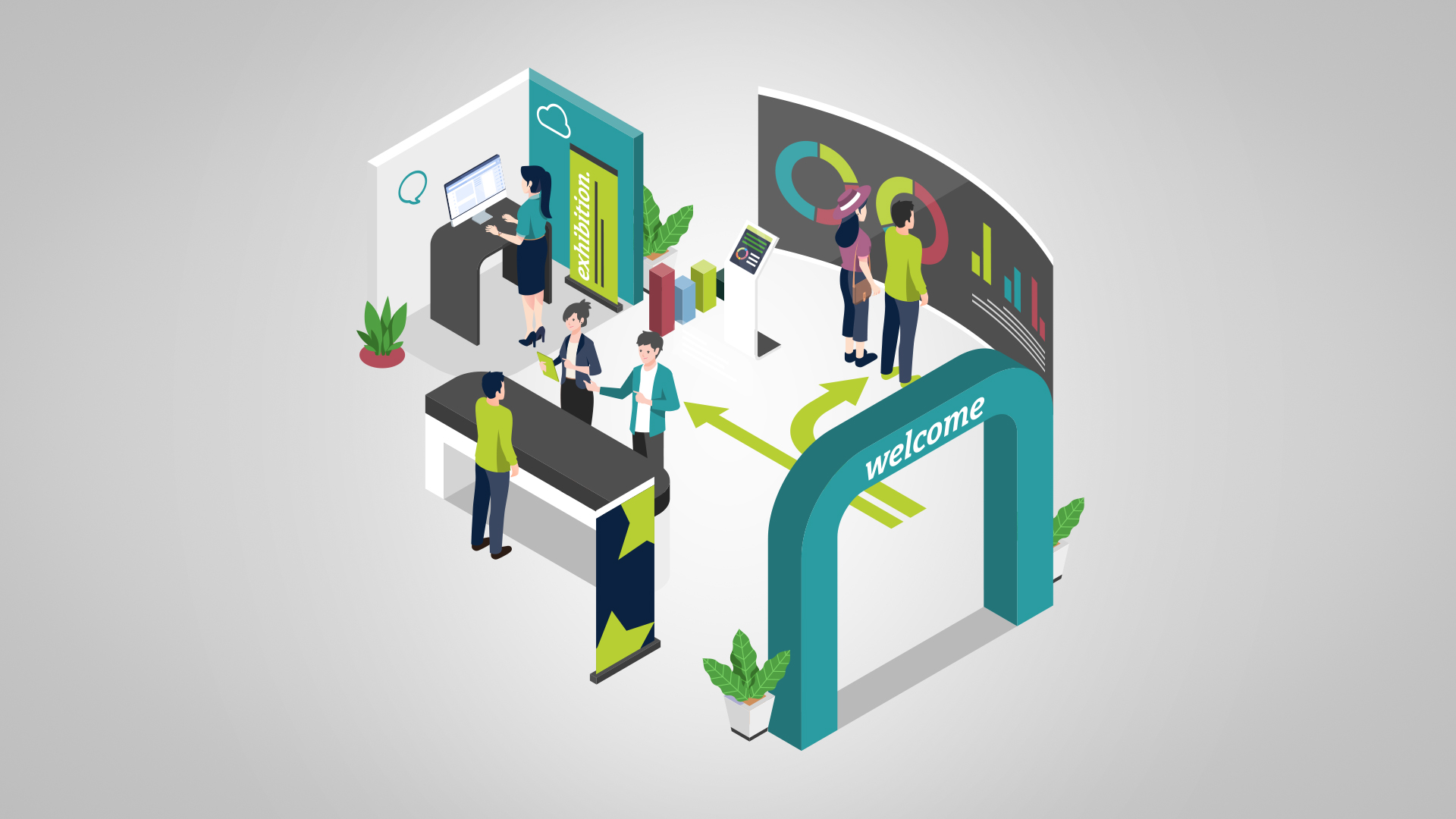
7 Strategies for Better Trade Show Lead Generation
Strategic Focus in Uncertain Times: Invest Where Buyers Make Decisions
When economic uncertainty looms, savvy businesses know it’s not the time to disappear. It’s the time to realign and invest closest to the point of purchase. Across industries, smart brands are trimming broad-based awareness campaigns in favor of more direct, attributable marketing investments. The rationale is simple: spend where the dollars do the most work.
That’s exactly what consumer giants like Brown-Forman are doing. With a product presence in virtually every liquor aisle across the country, they have shifted budget away from top-of-funnel branding and toward in-store activation. The goal is to tighten the connection between their messaging and the moment of purchase.
But what happens when your brand doesn’t live on a retail shelf? In this edition of Plain Talk, we’ll give the humble trade show its due as B2B marketers flood back to this time-tested selling tool.
For B2B, the Point of Purchase Travels
In the B2B world, there is no literal “shelf” where a prospect discovers and grabs your product. The buying cycle is long, complex, and collaborative. Yet there are still moments that matter, moments when buyers form opinions, ask questions, and make decisions.
These moments often occur in two places:
- Sales enablement touchpoints, such as demo sessions, product walkthroughs, or proposal meetings
- Trade shows and conferences, where intent-driven prospects converge with real budgets and buying authority
Let’s focus on the second.
Trade Shows Are Back and More Competitive Than Ever
Post-COVID, the return of in-person trade shows has been both rapid and massive. According to a 2025 report by IBIS, U.S. companies are projected to spend over 16.3 billion dollars on trade show appearances this year alone. This is a major recovery from the pandemic-era low of 5.6 billion dollars in 2020.
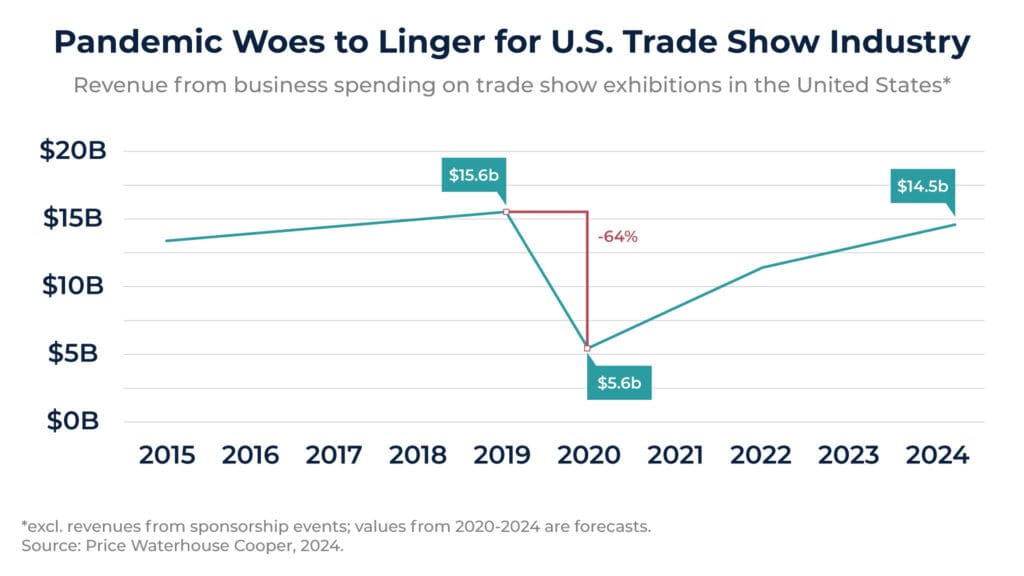
Yet, while foot traffic is back, attention spans are not. Attendees are more selective than ever, conditioned by years of digital-only interactions. A flashy booth is no longer enough. Your presence must do more. It needs to:
- Attract
- Engage
- Educate
- Convert
7 Smart Strategies to Convert Trade Show Engagement Into Leads
Consider this, according to the Center for Exhibition Industry Research (CEIR), 81 percent of trade show attendees have buying authority. These are not window shoppers. They represent high-stakes deal potential walking the floor. To convert that potential into sales, companies must go beyond clever signage and giveaways.
Below are seven strategies for trade show lead generation to help translate traffic into tangible business outcomes. The focus is on user experience and technology-led innovation.
1. Design booths around buyer journeys instead of organizational charts
Too often, booths reflect how companies structure their internal offerings instead of how buyers experience their problems.
Instead of siloed displays for each product category:
- Map out common visitor challenges
- Group solutions by use case or desired business outcome
- Orient signage, touchpoints, and staff around visitor intent rather than your internal structure
This isn’t just a design upgrade; it’s conversion architecture. According to CEIR, booth layout is a top-three driver of dwell time, which strongly correlates with lead generation.
2. Use technology that earns its real estate
While certainly not new to the trade show scene, touchscreens are frequently underutilized. They sadly often serve as looping PowerPoint stations. This is a major missed opportunity. Interactive content can outperform static content by up to five times in memory recall and engagement duration.
To use them effectively:
- Let visitors explore products by persona, role, or scenario
- Include real-time calculators, configurators, or interactive simulations
- Add depth by allowing quick skimming or deep dives based on interest level
This turns your booth into a personalized, self-guided demo station. It offers something printed banners never can.
Tech trends to embrace:
- Augmented reality allows attendees to visualize your product in their environment. This is especially useful for large equipment, architecture, or software systems.
- AI-powered interfaces can run on kiosks to answer FAQs, gather information, or pre-qualify leads.
- IoT integration enables you to track visitor movements, trigger screen content, or personalize experiences when VIPs arrive.
ARtillery Intelligence projects that AR adoption in marketing will exceed one billion users by 2026. Trade shows provide the perfect proving ground for these technologies.
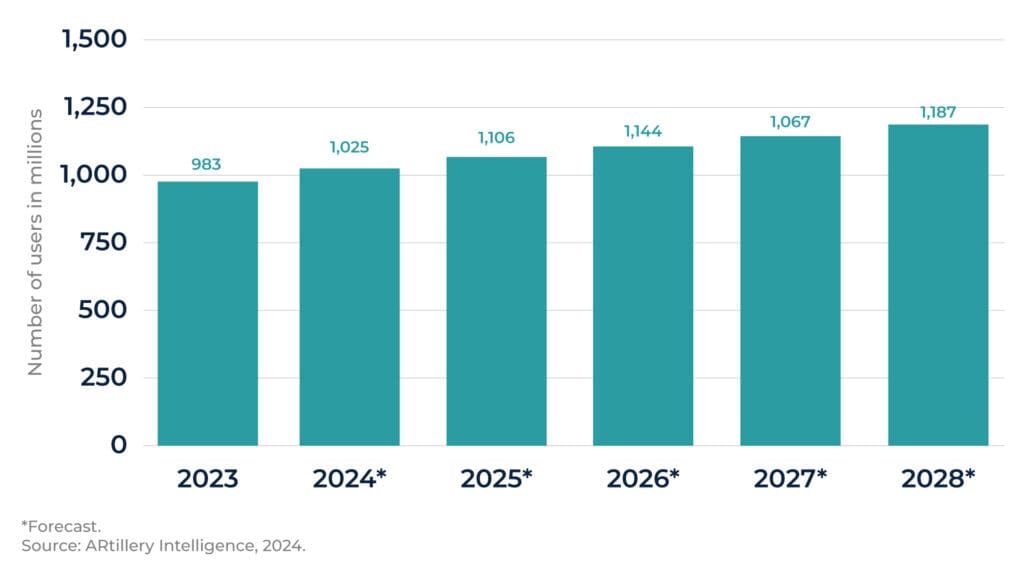
3. Gamify engagement with purpose
The business-card raffle is a relic. Today’s attendees want value for their time. When done right, gamification can increase lead conversion and engagement.
Consider:
- Trivia challenges that educate while entertaining
- Leaderboards that display top scores and encourage replay
- Quizzes that guide users to tailored recommendations or content
Each of these elements does double duty. They increase booth engagement while generating valuable data. You’ll know which topics resonated most, who was most engaged, and where to focus future efforts.
4. Create immersive, multi-sensory experiences
According to one study, the human brain retains as much as 95 percent of a message delivered through a multisensory experience, compared to just 10 percent from plain text.
Try combining:
- Video walls and synchronized lighting effects
- Sound design that complements product demonstrations
- Physical touchpoints that bring the product to life
When done well, these setups create memorable anchor experiences. They also differentiate your booth from the surrounding noise.
5. Extend the life of your digital content
Most companies treat trade show content as single use. That is a costly mistake. Digital content, especially interactive tools, can be repurposed well beyond the event.
Examples include:
- Tablet kits for sales reps that replicate your booth experience during one-on-one meetings
- Showroom displays or lobby installations to reinforce brand messaging with office visitors
- Event follow-up microsites that provide post-show content tailored to each lead
Treat your trade show lead generation investment as the beginning of a content cycle, not the end.
6. Warm up your audience before the show starts
One of the most underutilized tactics in trade show lead generation is pre-event awareness building. A strong booth and interactive technology are powerful once your target buyer is in the venue. However, what if you could shape their expectations before they even walk through the door?
That is exactly what smart brands do by combining targeted PR and strategic media buying in the lead-up to a major show.
Why it works:
Research from the Event Marketing Institute shows that pre-event outreach increases booth traffic by up to 33 percent.
Tactics to consider:
- Earned media and press coverage: Secure thought leadership placements, product launch mentions, or speaker profiles in trade media. If your executives are presenting at the show, pitch preview stories or conduct media briefings ahead of time
- Geofenced or contextual digital ads: Target known attendees or high-fit prospects with display or LinkedIn ads. Use messaging that teases what they will experience at your booth
- Email campaigns and retargeting: Re-engage previous booth visitors or prospects already in your CRM with countdown messages, sneak peeks, or appointment scheduling links
- Influencer and analyst engagement: In B2B categories with complex buyer cycles, warm up third-party voices who may influence your audience. This helps validate your expertise before the event even begins
The payoff:
Warming up your audience does more than increase foot traffic. It shortens your sales cycle. When attendees arrive already familiar with your message or product benefits, they require less education and are more likely to engage in meaningful conversations. They see your booth not as a discovery moment, but as a confirmation of value.
By investing in awareness before the event, you shift from competing for attention to being on the shortlist.
7. Measuring success: It’s more than badge scans
Trade show ROI should be measured using multiple signals. Badge scans only tell you who stopped by. To really understand impact, track:
- Lead quality, not just quantity
- Engagement depth, including how visitors used your interactive tools
- Sales conversion timelines, from first booth interaction to closed-won deals
Today’s technology makes this easy. You can integrate lead capture tools directly with your CRM, track screen analytics, and even analyze booth heatmaps.
Focus on the Moment That Matters
Trade shows are a significant investment. But they don’t have to be a gamble. When you focus on the moment closest to purchase and use technology strategically, your booth becomes more than just a place to stand. It becomes a business accelerator.
Whether you’re in software, manufacturing, healthcare, or logistics, the moment your buyer forms an opinion or starts a conversation is your true point of purchase. The more intentional and immersive that moment is, the better your returns will be.
Ready to Elevate Your Trade Show Lead Generation?
At PriceWeber, we’ve been creating trade show experiences that drive measurable outcomes for decades. From touchscreen UX strategy and gamified demos to holograms and augmented reality, our team brings innovation to every layer of engagement. If you need to talk about how to supercharge your next trade show appearance, give us a call at 502 499-4205 or drop us a note here and we’ll set up some time together.
Our Articles Delivered
Signup to receive our latest articles right in your inbox.



